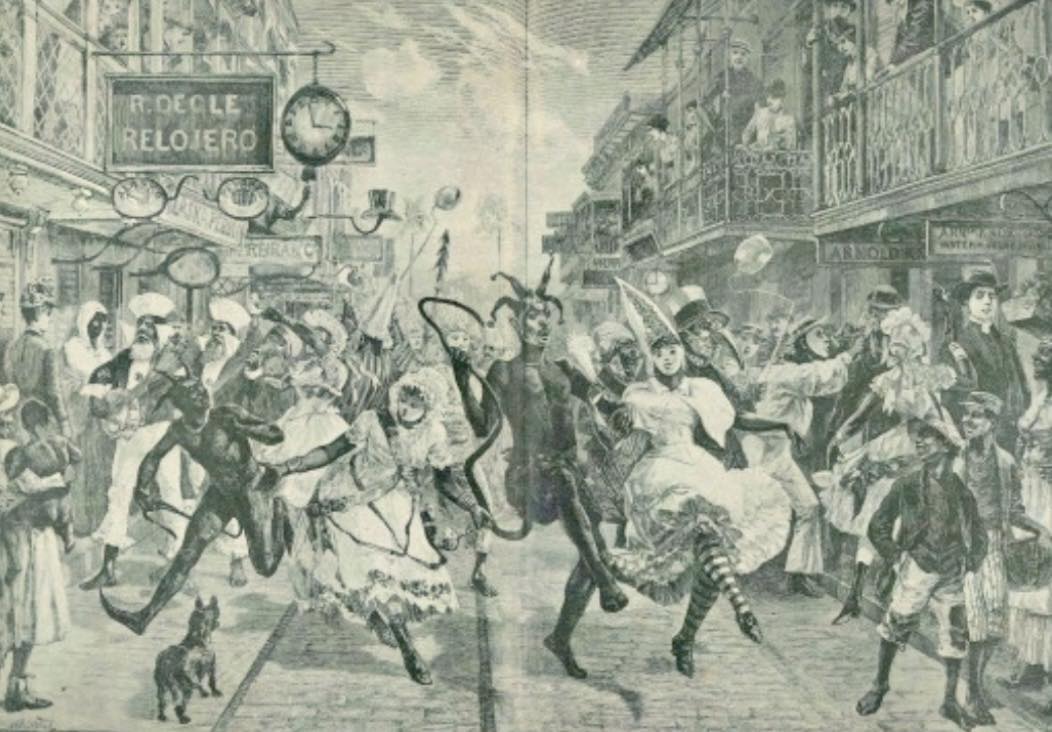|
The celebration of Carnival first came to Trinidad and Tobago with French planters and enslaved Africans after the Cedula of Population in 1783. It was celebrated mainly by the French elite and included masked balls, parading through the streets of Port of Spain, and visiting each other’s estates for various events.
Whilst enslaved Africans were barred from participating in these events, they performed and enjoyed their own activities, such as kalenda (stick fighting), juba and bélé dances. During the 19th century, Calypso music also developed in Trinidad, from the West African music that was brought by enslaved Africans. After Emancipation in 1838, the formerly enslaved began joining in the Carnival festivities by masking, dancing, stick-fighting, and mocking the white planters, bringing radical changes into the pre-Lenten revelry. Popular masquerades during this period included devils, clowns, mokos, and Canboulay (cannes brulées), which had become an important feature of the Carnival to commemorate Emancipation. This illustration shows Carnival in Frederick Street, Port of Spain in 1888 by artist William Heysham Overend from the “Illustrated London News”, courtesy of the book “The Trinidad Carnival”, by Errol Hill. It is part of the National Archives Exhibition “Carnival of Long Ago”. References: “Carnival of Long Ago” National Archives of Trinidad and Tobago Exhibition, http://www.natt.gov.tt/.../Carnival_Exhibition_Board.pdf
0 Comments
Leave a Reply. |
T&T news blogThe intent of this blog is to bring some news from home and other fun items. If you enjoy what you read, please leave us a comment.. Archives
May 2025
Categories
All
|


 RSS Feed
RSS Feed